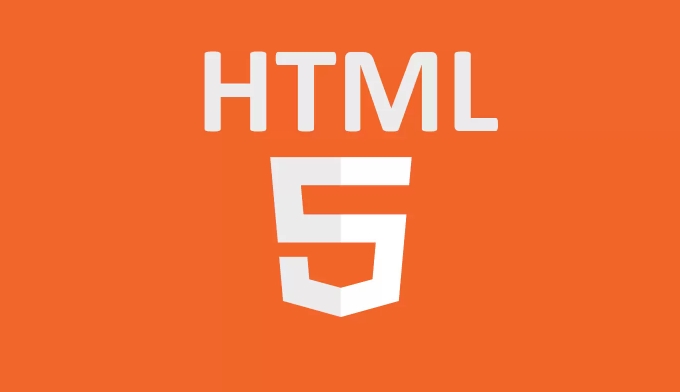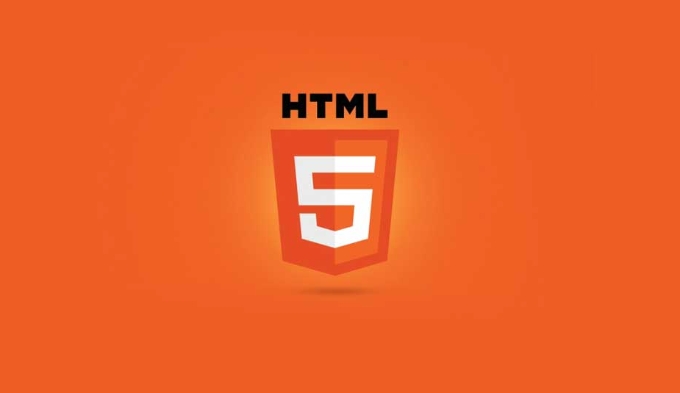How to use the HTML5 Data attributes for custom data.
HTML5's data attribute is a standard way to store custom data on page elements. 1. It starts with data-, such as data-user-id. The data is invisible to the user but can be accessed through JavaScript; 2. Use the dataset attribute to read or set the data, and the hyphen is converted to camel; 3. Suitable for front-end template rendering, component state management, interactive control and other scenarios; 4. Notes include avoiding storing sensitive or large amounts of data, preventing naming conflicts, paying attention to data type conversion, and reasonable use to avoid performance problems. Correct use of data attributes can make front-end logic clearer and more concise.

HTML5's data attribute is a very practical feature that allows you to store custom data on HTML elements without the need for additional JavaScript objects or global variables. Not only does it have a clear structure, it also makes the front-end logic simpler.

What is a data attribute?
The data attribute is a standard way in HTML5 to embed custom data on page elements. This data is not visible to users, but can be easily accessed and manipulated through JavaScript.

The naming rule starts with data- followed by a property name you defined, such as:
<div data-user-id="123" data-role="admin"></div>
The browser automatically recognizes these properties as legitimate HTML properties and does not affect page rendering.

How to read and set data properties?
You can access data through dataset property of JavaScript.
For example:
const element = document.querySelector('div'); console.log(element.dataset.userId); // Output: "123" console.log(element.dataset.role); // Output: "admin"
Note: A hyphen (such as data-user-id ) in the attribute name will be converted to camel ( userId ).
The setup is also very simple:
element.dataset.userId = '456'; element.dataset.newKey = 'newValue';
This will automatically update or add the corresponding data attribute on the DOM.
Which scenarios are suitable for using data attributes?
- Front-end template rendering : When rendering on the server, some initial data can be placed in the data attribute for front-end JS initialization.
- Component status management : For example, information such as the status of the button, whether it has been loaded, can temporarily exist on the DOM.
- Interactive control : For example, after clicking a menu item, you need to pass certain parameters, which can be stored and read directly using data.
- SEO or accessibility assistance : Although sensitive information is not recommended, non-public meta information can be saved in this way.
Of course, avoid storing large volumes of data or sensitive content because they are exposed to source code.
Notes on using data attributes
Only use data related to the current page context : do not use it to persistent storage, and refresh the page will be gone.
Be careful when naming conflicts : try to use module or functional prefixes, such as
data-cart-item-idinstead ofdata-id.Types are strings : If you need a number or a boolean value, remember to convert it manually:
const id = parseInt(element.dataset.userId, 10); const isActive = element.dataset.active === 'true';
There is little performance problem, but don't abuse it : If you have thousands of elements with a large number of data attributes, it may affect rendering speed or memory footprint.
Basically that's it. The data attribute is simple to use, but it can play a good auxiliary role in actual projects, especially in front-end collaboration and component communication.
The above is the detailed content of How to use the HTML5 Data attributes for custom data.. For more information, please follow other related articles on the PHP Chinese website!

Hot AI Tools

Undress AI Tool
Undress images for free

Undresser.AI Undress
AI-powered app for creating realistic nude photos

AI Clothes Remover
Online AI tool for removing clothes from photos.

ArtGPT
AI image generator for creative art from text prompts.

Stock Market GPT
AI powered investment research for smarter decisions

Hot Article

Hot Tools

Notepad++7.3.1
Easy-to-use and free code editor

SublimeText3 Chinese version
Chinese version, very easy to use

Zend Studio 13.0.1
Powerful PHP integrated development environment

Dreamweaver CS6
Visual web development tools

SublimeText3 Mac version
God-level code editing software (SublimeText3)

Hot Topics
 1673
1673
 276
276
 How to play multiple audio files sequentially in HTML5?
Aug 25, 2025 pm 03:08 PM
How to play multiple audio files sequentially in HTML5?
Aug 25, 2025 pm 03:08 PM
You can play multiple audio files in sequence by listening to the ended event of HTML5 audio elements. First, the clear answer is to use the ended event to trigger the next audio playback; the specific steps are: 1. Define the audio file array and obtain the audio element; 2. Set the current playback index, load and play the first audio; 3. Bind the ended event for the audio element, increment the index when the event is triggered and the next audio is loaded; 4. You can choose to realize loop playback or stop after the playback is finished; 5. You can preload the next audio to improve the experience; 6. Add error processing to skip failed audio; 7. Pay attention to the browser's autoplay restrictions, and the first playback needs to be triggered by user interaction to ensure that subsequent playback is not blocked, and the whole process passes
 How to add a favicon to your website with HTML5
Aug 27, 2025 am 02:35 AM
How to add a favicon to your website with HTML5
Aug 27, 2025 am 02:35 AM
To add a website favicon correctly, first prepare a 32×32 or 64×64 pixel .ico, .png or .svg format icon file and name it favicon.ico, etc., place it in the website root directory or a specified path, and then use a clear statement in the HTML tag. For example: It is recommended to support multiple formats and devices at the same time, such as adding PNG different size versions, SVG icons, and Apple touch icons. Finally, clear the cache and test whether it displays normally, to ensure that the path is correct and the file is accessible. The entire process requires attention to the file format, path and compatibility to avoid loading failure.
 What is the placeholder attribute's purpose in HTML5?
Aug 31, 2025 am 06:58 AM
What is the placeholder attribute's purpose in HTML5?
Aug 31, 2025 am 06:58 AM
Theplaceholderattributeprovidesashorthintininputfieldsthatdisappearswhentypingbegins;1.Itisusedinandelementstoshowexampletextlike"Enteryouremail";2.Thehintisdisplayedonlywhenthefieldisemptyandstyledfaintlybybrowsers;3.Itdoesnotreplacetheele
 How to use the HTML5 template tag
Aug 31, 2025 am 08:23 AM
How to use the HTML5 template tag
Aug 31, 2025 am 08:23 AM
TheHTML5tagstoresinert,reusableHTMLcontentthatcanbeclonedwithJavaScript;itremainsunrendereduntilprogrammaticallyinserted,makingitidealfordynamicallygeneratingelementslikeproductcardswithoutreloadingorhardcoding,anditsupportsadvancedfeatureslikedataat
 How to make an audio player with custom controls in HTML5?
Sep 16, 2025 am 04:21 AM
How to make an audio player with custom controls in HTML5?
Sep 16, 2025 am 04:21 AM
First create hidden audio elements and build a custom control UI, and then connect functions such as playback, pause, progress adjustment and volume control to the audio API through JavaScript to achieve a fully personalized audio player.
 How does Content Security Policy (CSP) work with HTML5?
Aug 30, 2025 am 01:29 AM
How does Content Security Policy (CSP) work with HTML5?
Aug 30, 2025 am 01:29 AM
CSPenhancesHTML5securitybydefiningtrustedcontentsourcestopreventXSS,clickjacking,andcodeinjection.1.Itrestrictsinlinescriptsandstylesbyblockingthemunless'unsafe-inline',nonces,orhashesareused.2.Itcontrolsexternalresourcesviadirectiveslikescript-src,i
 What is the importance of the alt attribute for images in HTML5?
Aug 27, 2025 am 02:29 AM
What is the importance of the alt attribute for images in HTML5?
Aug 27, 2025 am 02:29 AM
Thealtattributeisessentialforaccessibility,SEO,anduserexperience;1.Itenablesscreenreaderstodescribeimagestovisuallyimpairedusers,ensuringcontentcomprehension;2.Itdisplaysfallbacktextwhenimagesfailtoload,maintainingcontext;3.ItimprovesSEObyhelpingsear
 What is the purpose of the tag in HTML5?
Aug 28, 2025 am 08:31 AM
What is the purpose of the tag in HTML5?
Aug 28, 2025 am 08:31 AM
ThetagsetsabaseURLand/ortargetforallrelativeURLsinapage,streamliningresourceloadingandlinkbehavior;2.ItallowsdefiningadefaultbaseURLtoavoidrepeatingfullpathsforassetslikeimages,scripts,andstylesheets;3.Itcansetadefaulttarget(e.g.,\_blank)foralllinksw





